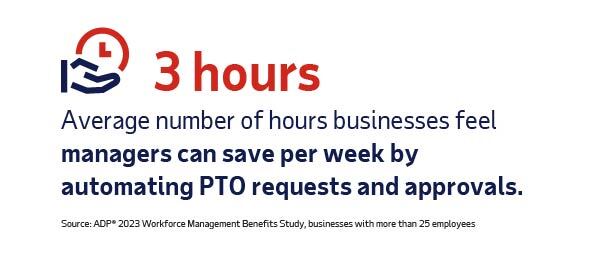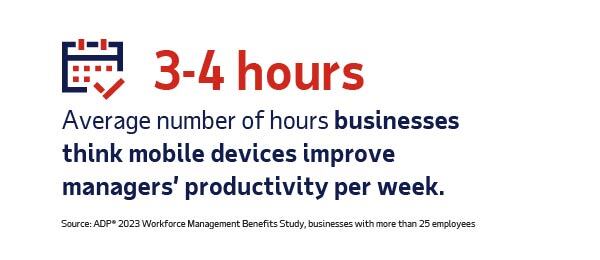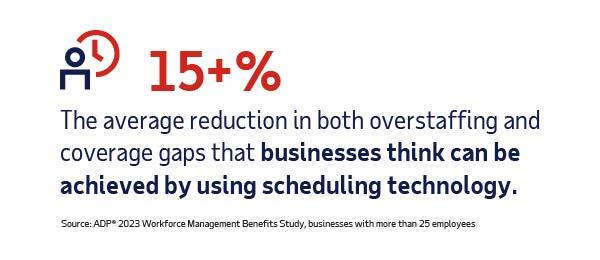4 Ways to Boost Productivity Using Workforce Management Technology

Learn how workforce management technology improves productivity through process automation, convenient communication, optimal shift coverage, and proactive insights. The technology also saves time, increases efficiency, and enhances collaboration.
Optimizing productivity is essential for any business to succeed and thrive. Whether productivity is measured in individual efficiency, department performance or company financial data, businesses that efficiently manage their workforce can significantly improve their productivity levels and remain competitive.
Fortunately, workforce management technology has made optimizing your employee productivity and operations easier than ever. Here are four ways to boost productivity using workforce management technology.
1. Process automation and streamlining
One significant advantage of using workforce management technology is process automation and streamlining. These solutions help to automate several processes, such as timekeeping, employee scheduling, PTO requests and approvals, and leave case management. This automation leads to less manual effort and paperwork, which saves time and increases efficiency.

Cloud-based software also makes it easy to store and retrieve information online. It eliminates the need for physical records, making it easy to access information from anywhere, at any time, allowing managers and employees to be more productive, even when working remotely.
Workflow consistency and streamlining is another benefit of automation. Systems help everyone focus attention on where it is most needed. For example, manager dashboards can highlight requests awaiting approval or timecards with exceptions waiting to be addressed. Some solutions can offer recommendations that take business rules and policies into consideration, making it faster and easier to take action. This streamlining can lead to good habits and process compliance, which can further contribute to productivity by allowing people to focus on their core responsibilities, whether they be sales, customer service, patient care, shop floor optimization or other essential contributions to the business.
2. Convenient and collaborative communications
Effective communication is essential for any business to succeed, and workforce management technology makes it easier than ever to communicate with employees.
Solutions are more mobile-friendly than ever, making accessing information from anywhere easy. This is especially useful for managers and employees who are on the go. Access to important information about schedules, approvals, and tasks from mobile devices helps to keep everyone informed, on time and productive.

The software can also alert managers and employees when an action is needed. For example, a manager can receive an alert when an employee requests time off. This feature can help ensure that administrative processes keep moving and that managers and employees stay informed and on the same page about important events.
Collaborative scheduling allows employees to communicate their availability and preferences and can request to swap or drop shifts. Some systems can automatically recommend employees who are available to fill a shift. Meanwhile, managers can publish and communicate schedules and post open shifts, and employees can claim them. This saves everyone time and leads to schedules and earnings that people are happier with, which can lead to higher energy and productivity.
3. Optimal shift coverage
Having the right people in the right place at the right time is critical for productivity. Workforce scheduling technology can understand labor needs and help ensure that companies are adequately staffed.
Artificial intelligence (AI) can be leveraged to forecast labor requirements based on history, and then these requirements can be used as the basis for employee schedules. Systems can also optimize schedules based on employee availability, certifications, licenses, skills, and preferences.
With an optimized schedule, businesses can ensure they have the coverage they need during peak need so that workers do not have to work overtime or that the shift is short-staffed. Likewise, companies have fewer instances of being overstaffed, so workers are not bored or paid to sit around when there are lulls in activity.

4. Proactive insights and management
One of the most significant benefits of workforce management technology, and of tracking time and attendance daily, is the ability to spot trends and problems in advance. Technology can more quickly and reliably identify patterns in employee behavior than people can.
Whether it's insights into metrics like absenteeism and overtime you desire, or a view of actual hours worked in each week or pay period, it can be made very easy. For manufacturers, the technology can help track details about the work performed. For example, analyzing downtime and waste can lead to significant productivity gains, as can tracking output, scrap, and yield. Analyzing job design and efficiency can also help identify areas where improvements can be made.
With a modern workforce management system, you can analyze employee data to identify issues before they become problems. With this information, you can then explore the root causes in a focused way by further inspecting specific teams, departments, or managers.

Workforce management technology provides several advantages for boosting productivity in your organization. By automating and streamlining processes, improving communication, optimizing shift coverage, providing proactive insights and management, and tracking activity and time, individuals have more time to focus on the most critical work and businesses can become more efficient, successful, and competitive.
Learn more
Finding the right workforce management solution requires careful consideration of many factors – business size, industry, workforce attributes, work locations and strategic goals. Our buyer's guide outlines those factors and other important decision points.
Download the Workforce management buyer's guide today.
1 ADP® 2023 Workforce Management Benefits Study, businesses with more than 25 employees



